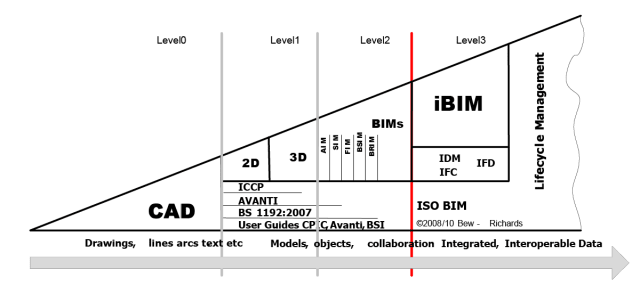While the U.S. has a set of best-practice BIM standards, the country doesn’t have a UK-style mandate. (Image courtesy of National BIM standard – United States.)
Since the UK’s government implemented their BIM mandate in 2015, there have been no shortage of articles hoping, wishing, or suggesting that the U.S. take up its own mandate. And as BIM grows in popularity, there’s a growing faction in the industry who think that in not setting a mandate, the U.S. is falling behind.
The bad news first: a very different industry and building culture means that the U.S. is unlikely to see a federal BIM mandate any time soon. The good news: that’s not necessarily a bad thing.
Case Study: The United Kingdom
Companies in the U.S. were early BIM adopters, but early-stage problems slowed the adoption progress. This means that some countries have caught up to or surpassed the U.S. in terms of widespread BIM use or government standardization.
The UK, often seen as one of the worldwide champions of BIM, is one such country. In 2016, the country implemented a Level 2 BIM mandate for any construction company working on a government project, which meant that all stakeholders involved had to communicate with common CAD file formats. The move was partly driven by the fact that UK firms using BIM realized 15 to 20 percent construction cost savings from 2009 to 2015.

Industry diagram showing different BIM levels: Level 0 BIM use involves 2D drawings only, with almost…

